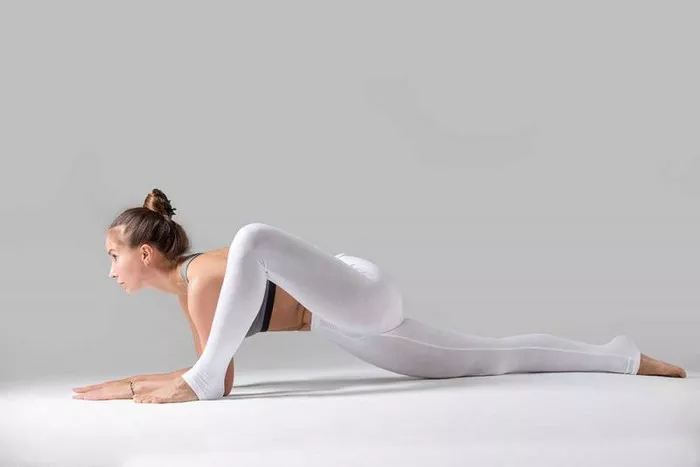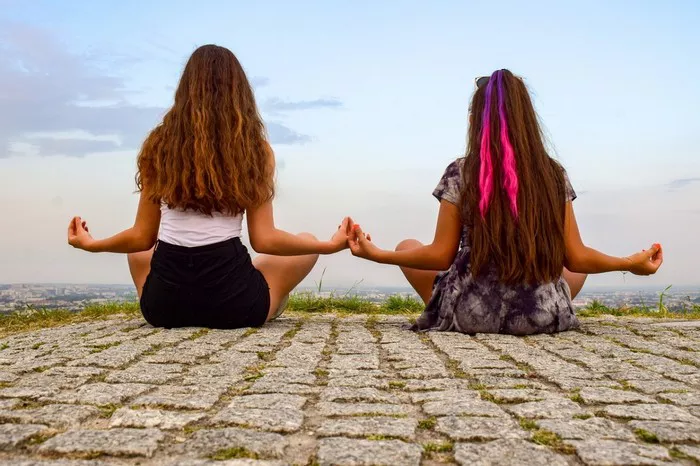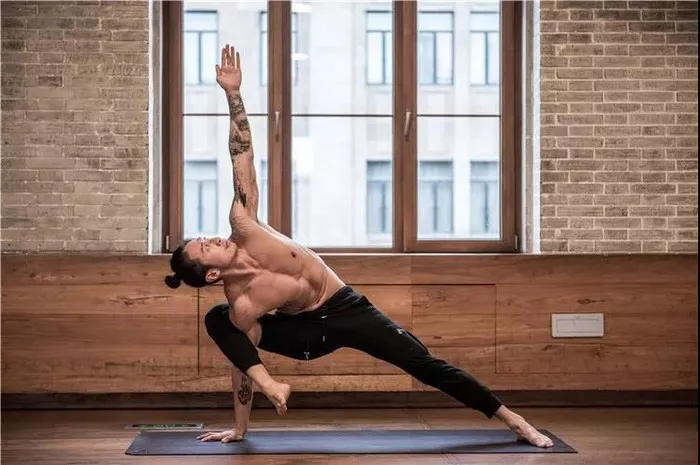In the fast-paced world we inhabit, finding moments of calm can feel challenging. Gentle yoga serves as a sanctuary, inviting individuals to reconnect with their bodies and minds through soft, nurturing movements. This article delves deep into the realm of gentle yoga poses, exploring their benefits, techniques, variations, and how to create a comprehensive gentle yoga practice.
Understanding Gentle Yoga
What is Gentle Yoga?
Gentle yoga is a form of yoga that focuses on slower-paced movements, mindfulness, and restorative poses. It is accessible to individuals of all ages and fitness levels, making it an excellent option for beginners or those seeking a gentler approach to physical activity. Gentle yoga incorporates breath awareness and meditation, promoting relaxation and stress relief.
The Philosophy Behind Gentle Yoga
At its core, gentle yoga emphasizes self-care and compassion. It encourages practitioners to listen to their bodies, honor their limits, and cultivate a sense of inner peace. This approach fosters a supportive environment where individuals can explore their physical and emotional landscapes without the pressure of achieving perfection.
Benefits of Gentle Yoga Poses
Physical Benefits
Increased Flexibility: Gentle yoga promotes flexibility through slow, mindful stretches, allowing for greater range of motion over time.
Improved Balance: Many gentle poses enhance balance, reducing the risk of falls and improving overall stability.
Strength Building: While gentle in nature, many poses still engage muscles, helping to build strength in a safe manner.
Pain Relief: Gentle yoga can alleviate tension and discomfort, making it beneficial for those with chronic pain or stiffness.
Enhanced Circulation: The mindful movements encourage blood flow and improve circulation throughout the body.
Mental and Emotional Benefits
Stress Reduction: Gentle yoga promotes relaxation and helps alleviate stress, anxiety, and depression through breathwork and meditation.
Mindfulness and Awareness: Practicing gentle yoga encourages mindfulness, allowing individuals to be present in the moment and tune into their thoughts and feelings.
Emotional Release: The practice can serve as a channel for emotional release, helping individuals process and let go of pent-up feelings.
Improved Sleep Quality: Regular practice can lead to better sleep patterns by calming the nervous system and reducing anxiety.
See also: Lord of the Dance Yoga Pose: Mastering Balance and Grace
Essential Gentle Yoga Poses
1. Child’s Pose (Balasana)
Benefits: Gently stretches the back, hips, and thighs while promoting relaxation and introspection.
How to Practice:
Kneel on the mat, touching your big toes together and sitting on your heels.
Fold forward, resting your forehead on the mat.
Extend your arms in front of you or alongside your body.
Breathe deeply, allowing your body to relax into the pose.
2. Cat-Cow Stretch (Marjaryasana-Bitilasana)
Benefits: Enhances spinal flexibility and helps relieve tension in the back.
How to Practice:
Start on all fours with wrists directly under shoulders and knees under hips.
Inhale, arching your back (Cow Pose), lifting your head and tailbone.
Exhale, rounding your spine (Cat Pose), tucking your chin and pelvis.
Repeat several times, syncing breath with movement.
3. Seated Forward Bend (Paschimottanasana)
Benefits: Stretches the spine, hamstrings, and calves while calming the mind.
How to Practice:
Sit with your legs extended in front of you, feet flexed.
Inhale, lengthening your spine, and exhale as you hinge forward from your hips.
Reach for your feet or shins, keeping your back straight.
Hold the pose, breathing deeply.
4. Supported Bridge Pose (Setu Bandhasana)
Benefits: Opens the chest and shoulders while relieving tension in the back.
How to Practice:
Lie on your back with knees bent and feet hip-width apart.
Place a block or cushion under your sacrum for support.
Allow your arms to rest at your sides.
Focus on deep breathing, feeling the gentle stretch in your chest.
5. Legs-Up-the-Wall Pose (Viparita Karani)
Benefits: Promotes relaxation and reduces swelling in the legs and feet.
How to Practice:
Sit next to a wall and lie on your back, swinging your legs up the wall.
Adjust your distance from the wall for comfort.
Allow your arms to rest at your sides or place them on your belly.
Close your eyes and breathe deeply, relaxing in this restorative position.
Creating a Gentle Yoga Sequence
Structure of a Gentle Yoga Class
A gentle yoga session typically follows a simple structure that allows for a seamless flow of poses, breath, and relaxation.
Centering and Breath Awareness: Start with a few minutes of seated meditation or breath awareness to ground yourself.
Warm-Up Poses: Incorporate gentle stretches and movements to warm up the body, such as Cat-Cow and gentle twists.
Main Poses: Introduce key gentle yoga poses, allowing time for each pose to be explored with breath and mindfulness.
Cool Down and Restorative Poses: Gradually transition to cooling poses such as Child’s Pose and Legs-Up-the-Wall.
Closing Meditation: End with a few minutes of seated meditation or lying in Savasana, focusing on relaxation and integration.
Sample Gentle Yoga Sequence
1. Centering (5 minutes)
Begin in a comfortable seated position, focusing on your breath.
2. Warm-Up (10 minutes)
Cat-Cow Stretch: 5 rounds.
Neck Rolls: 3 in each direction.
Seated Side Stretch: 3 breaths on each side.
3. Main Poses (20 minutes)
Child’s Pose: 1 minute.
Seated Forward Bend: 5 breaths.
Supported Bridge Pose: 1-2 minutes.
Gentle Twists: 5 breaths on each side.
4. Cool Down (10 minutes)
Legs-Up-the-Wall Pose: 5-10 minutes.
Happy Baby Pose: 5 breaths.
5. Closing Meditation (5 minutes)
Lie in Savasana, focusing on relaxation and gratitude.
Tips for Practicing Gentle Yoga
Listen to Your Body
Gentle yoga is all about honoring your body’s needs. Pay attention to how you feel during each pose and modify or skip poses as necessary.
Use Props
Props such as blocks, straps, and bolsters can enhance comfort and support, making poses more accessible.
Focus on Breath
Breath is the foundation of yoga practice. Maintain deep, steady breaths to promote relaxation and mindfulness.
Create a Comfortable Space
Set up a calming environment with soft lighting, calming scents, and comfortable mats or blankets to create a nurturing atmosphere.
Practice Regularly
Incorporate gentle yoga into your routine, even if it’s just a few minutes each day. Consistency will enhance your physical and emotional well-being.
Common Misconceptions about Gentle Yoga
It’s Only for Beginners
While gentle yoga is accessible to beginners, it can also be beneficial for seasoned practitioners looking to deepen their practice or recover from intense workouts.
It’s Not Challenging
Gentle yoga may appear easy, but it can be quite challenging as it requires focus, mindfulness, and body awareness. The emphasis on breath and alignment creates a unique challenge.
It’s Only for Relaxation
While relaxation is a significant aspect of gentle yoga, it also provides strength, flexibility, and balance benefits, making it a holistic practice.
Conclusion
Gentle yoga poses offer a beautiful pathway to self-discovery, healing, and inner peace. By embracing this nurturing practice, individuals can cultivate physical strength, mental clarity, and emotional resilience. As you explore the world of gentle yoga, remember that each pose is an opportunity for connection—connecting with your breath, body, and the present moment.
Incorporating gentle yoga into your life can transform not only your physical health but also your emotional and spiritual well-being. Whether you’re a seasoned yogi or a newcomer, the practice welcomes you to find your unique rhythm and embrace the journey of self-care and mindfulness. As you step onto the mat, may you find the serenity and balance that gentle yoga so beautifully offers.
You Might Be Interested In
The Art of Movement: Exploring Artistic Yoga Poses





















